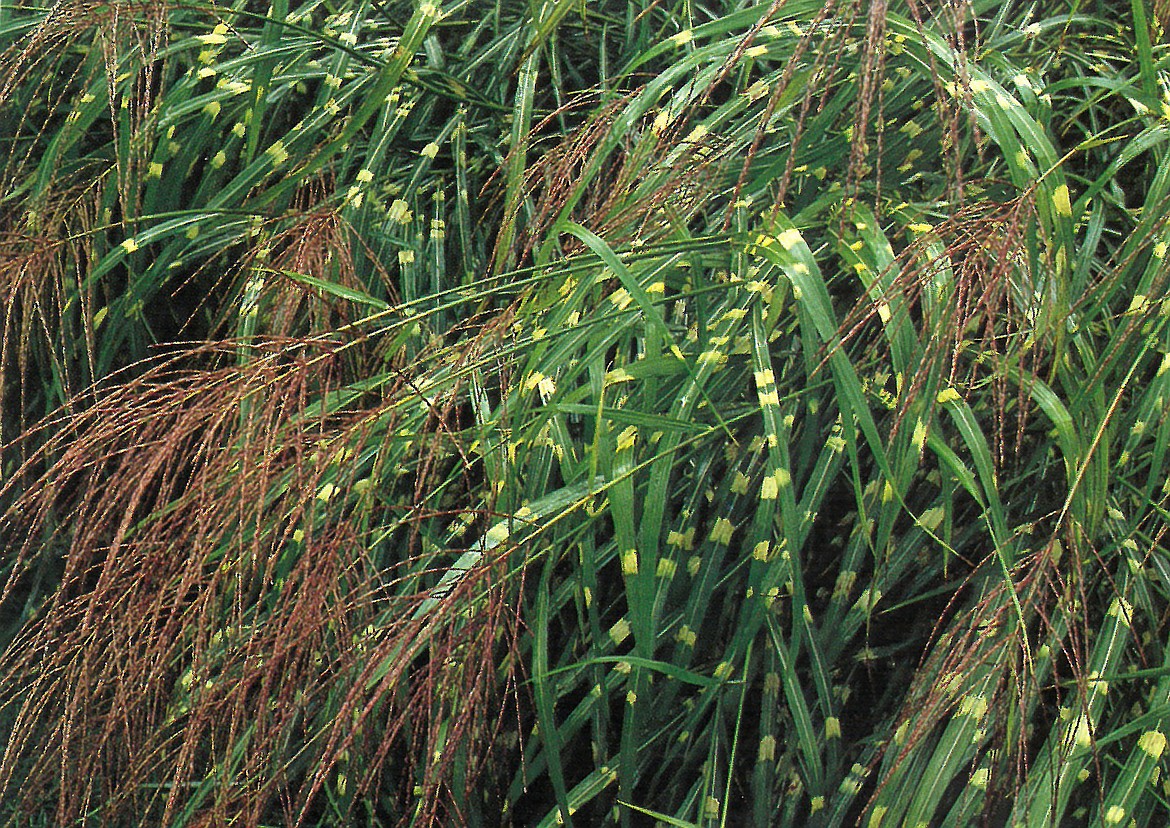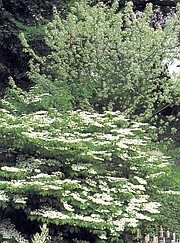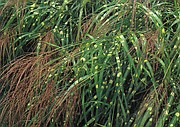Native shrubs and hardy cultivars ensure landscape success
VALLE NOVAK Contributing Writer | Bonner County Daily Bee | UPDATED 4 years, 10 months AGO
Usually my garden/landscape columns address either native or cultivated shrubs and flora, today I’m going to offer a “truce” encouraging a blending of the two for a happy combination of color, beauty and practicality for fabulous garden structure.
Tried and true hardy flowering shrubs like forsythia, viburnum, hydrangeas and more will be introduced to Ninebark, Ocean Spray and Syringa — and unlikely upstarts — Miscanthus and other ornamental grasses will meet Russian Sage, Lavender, Baby’s Breath and more, in a fun and ultimately beautiful ,melange of style, color and textures.
Plants, grasses and shrubs that you never thought of growing together can form a picture of exciting possibilities. Using the previous paragraph as an “ideagraph” check out the following for your own landscape.
Native shrubs are legion from water-lovers like Alder (Alnus) and Bog Birch (Betula nana), through the (shortened) gamut of alphabetically-sorted Native Plant Society list as follows: Buffalo berry, Cascara, Ceanothus (Buck Brush-Shiny-leaved or Red-stem), Chokecherry, Dogwood (Red or Yellow Osier), American plum (Prunus), Ninebark (Physocarpus, Ocean Spray (Holodiscus), Oregon Grape (Mahonia —Tall or creeping); Roses (Baldhip, Nootka, Pearhip, Prickly); Serviceberry (Amelanchier), Spirea (Birch-leaved or Douglas Pink); Sumac (Rhus). Whatever you choose, you’ll be enhancing your property and the well-being of our endangered bird population.
More small native trees/shrubs include Syringa, Elderberry (Sambucus), Cascara (Frangula), Sitka and Western Mountain Ash (Sorbus), Green Ash (Fraxinus), Snowberry (Symphoricarpos),
Idaho’s State Flower, the Syringa — or true Lilac —beautiful on its own, with shiny green leaves, exquisite white supremely scented flowers and an ornament to any landscape is doubly lovely when paired with a red Azalea or Rhododendron 0 or it’s cousin Syringa vulgaris, the Common Lilac. Lilacs are one of the most practical shrubs for our area since they prefer cool climates and require a long winter chill. Incidentally, the beloved old Common Lilac bushes become so huge over time they provide cover for nesting birds — a bonus advantage.
Staghorn Sumac (Rhus). boasts “furry” branches, pretty spray-like wine-red flower/seedheads for real beauty and uniqueness to a garden. Another native, its cousin Smooth Sumac (Rhus glabra) sports the same pinnately divided leaves/leaflets, but with florets of whitish to greenish fruiting to dry fruits covered with hairs — just one of many available cultivars. However, its beauty to the landscape it is not without problems. It grows quickly and the brittle wood can suffer under heavy snow and ice damage. That said, a beautiful red-leaved Sumac growing in daughter Shelley’s (former) front yard has gone unscathed for the past several years. Siting is always a consideration for any plants’ well-being.
Sumac’s basic winter hardiness, tolerance to poor, dry soil and its flower/seedhead source of food for birds and pollinators — along with its graceful beauty makes it a winner for many landscapes. One note: They do get big over time, so leave plenty of room and plan on smaller, low-growing shrubs to front them.
Cotinus or "Smoke bush" is an eye-catcher. A small graceful tree, known for its purple leaves and smoky, feathery flowers, it draws butterflies and pollinating wasps like a magnet. This graceful shrub is hardy here and mine came through the deep snow and freezing weather with no damage. Though generally called “Purple Smoke Tree” for its classic purple color, Cotinus is now also available in a brilliant red ("Grace") and a yellow-lime variation ("Golden Spirit") with autumn colors of orange, coral and red.
Cornus — our native Red and/or Yellow Osier dogwoods, with their bright stems enlivening winter landscapes, are generally shrubby in groupings but when grown singly, mature into a more tree-like form. These are choice for small landscapes, with all-season attractiveness and the bonus of making great feature-plantings when grouped closely together or staggered in threes. Depending on your choice, the bright red — or gold — stems provide gorgeous wintertime color. Viburnums don’t seem to get a lot of notice in the landscaping world, but let’s take a special look at their versatility, practicality and beauty. Our native Viburnum edule —or Highbush cranberry (not to be confused with bog or edible cranberries (vaccinium), has clustered white flowers and berries appreciated by birds. I once pointed out that the fruits of Viburnum were gathered by the earliest settlers and stewed, sugared and eaten as a sauce similar to cranberry sauce. From that humble beginning there are now literally hundreds of Vibernum cultivars , many of which have been trained for re-blooming.
Hydrangeas range from short to mid-sized to tall, and boast the classic old "Snowball" blossoms in pink as well as white, as well as pannicle and lace-cap choices in white, lime, pink, red-pink and even lavender, with ,leaf variations from honey-green to brilliant emerald. Many can now form additional flowers on the current season’s growth for a long-lasting show into fall. Many are hardy in our cold climate (Zone3 4,5). It likes full sun but accepts partial shade and forms a 4 to 6-foot tall shrub that blooms from midsummer into late fall.
Weigela (Wy-GEE-la) are so gorgeous they should be considered a “given. It’s cone-like flowers appeal to hummingbirds, butterflies and bees of every ilk while offering lot of stem/branch protection for nesting birds and glory to the garden. Many Weigela varieties boast repeat blooms, and choices of flower and foliage color offer bloom throughout summer and into late fall.
Azaleas generally produce a flush of blooms in the spring, with some also producing fall blooms. Breeders have worked hard to enhance these traits by crossing the rare repeat bloomers with summer blooming species to develop shrubs that will bloom reliably in spring, summer and fall so we can choose from a plethora of choices for all season bloom. True Rhododendrons (with the exception of white "Pohjola's Daughter", pink "Solidarity" and a few other Zone 4-hardy choices) are not too dependable here, but the Azaleas generally survive beautifully and provide glorious bloom, especially the fabulous Northern Lights series that were bred in Minnesota for hardiness, beauty and scent. They include a variety of vibrant color choices along with the delight of long-lasting bloom
The Red and/or Yellow Osier dogwoods, with their bright stems enlivening winter landscapes, are generally shrubby, but when grown singly, mature into a more tree-like form. These are choice for small landscapes, with all-season attractivness and the bonus of making great hedges when planted closely together. Depending on your choice, the bright red — or gold — stems provide gorgeous wintertime color.
Now, it’s up to you to look at what you have, what you’d like to have, and dare to mix and match form, color and structure for a knock-out garden that will delight you for years to come.
Valle Novak writes the Country Chef and Weekend Gardener columns for the Daily Bee. She can be reached at [email protected]. or by phone at 208-265-4688 between the hours of 8 a.m. to 7 p.m.







